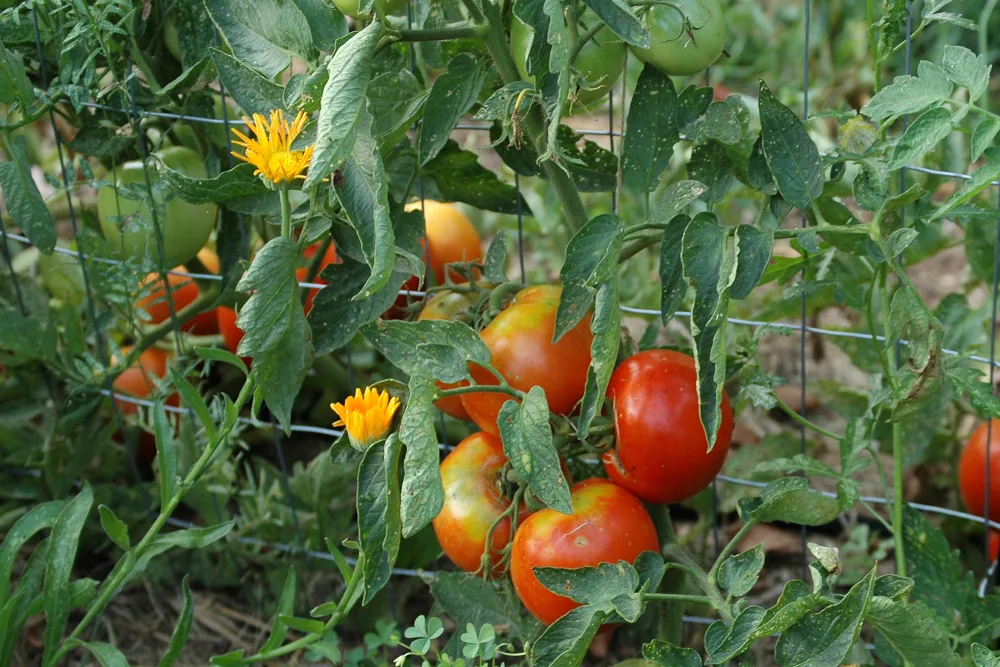Tomatoes are a joy to cultivate, satisfying gardeners of all levels. However, achieving a robust yield of juicy red tomatoes often requires clever planting and management.
One effective technique involves planting marigolds alongside your tomatoes. This natural pairing can significantly improve tomato harvest and promote a healthier garden environment.
Curious About Marigolds’ Role in Enhancing Tomato Yield?

Explore this article to uncover valuable insights into companion planting and learn how to apply these methods in your garden for optimal results.
Natural Pest Management
- Marigolds emit a potent scent that deters common tomato pests like aphids, nematodes, and whiteflies.
- Marigolds attract beneficial insects such as ladybugs and lacewings, which prey on these pests.
Improving Soil Quality
- Marigolds produce natural compounds that suppress root-knot nematodes, which harm tomato roots.shu
- Their decomposing leaves enrich the soil with organic matter, enhancing its structure for better tomato growth.
Enhancing Biodiversity and Pollination
- Marigolds’ vibrant colors attract pollinators like bees and butterflies, indirectly aiding tomato plant pollination.
- Diverse plantings create a resilient ecosystem, reducing the risk of disease outbreaks that may harm tomatoes.
Natural Weed Control
- Marigolds’ dense foliage acts as natural mulch, blocking sunlight and inhibiting weed growth around tomatoes.
- Marigolds help tomato plants access nutrients and water by minimizing weeds, promoting more robust growth and higher yields.
Incorporating marigolds into your tomato garden is a simple yet effective way to boost your harvest naturally.
With benefits in pest control, soil health, biodiversity, and weed management, marigolds offer a holistic approach to a thriving tomato crop.
